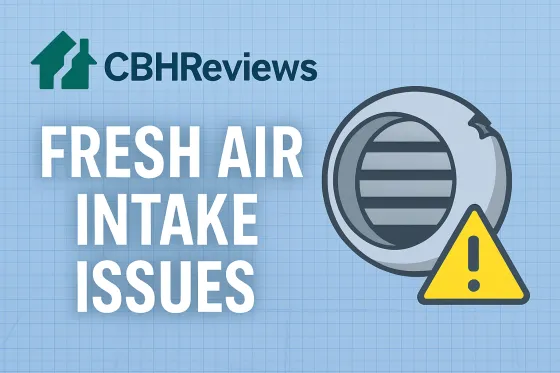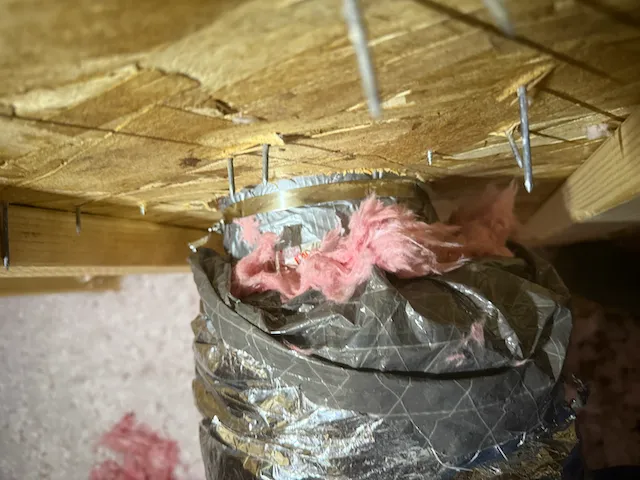
Our Fresh-Air Intake Came Loose – Here’s What We’re Seeing and Why We’re Concerned
Quick disclaimer: I’m not an HVAC pro. I’m just a homeowner documenting what we found in the attic and what I’ve pieced together from manuals, code language, and a couple of air-quality gadgets. If you spot something similar, definitely follow up with a licensed technician.
What We Discovered
Up in the attic we found that the flexible, fresh-air intake duct has pulled away from the exterior wall collar and is now hanging loose. Instead of bringing clean outdoor air into the HVAC return, the flex duct ends inside the unconditioned attic—which is full of loose fiberglass insulation, unconditioned air, and other things I really don’t want piped into my home.
I took a few quick photos and opened a warranty claim, but while we wait I wanted to understand the possible risks for the family.
Detached Duct Side

Detached Duct Top

Why We Think It Matters
| What Could Go Wrong | How I Figure It Might Affect Us |
|---|---|
| Dusty indoor air | The furnace/air-handler could be sucking attic air (dust, insulation fibers, debris) straight into the supply ducts and circulating it around the house. |
| Extra moisture & possible mold | Humid attic air in summer—or cold, damp attic air in winter—could condense inside the flex duct or on the coil, leading to mold. |
| HVAC strain & higher bills | The system was sized for outdoor make-up air. Pulling attic air instead of exterior air can throw off pressure balance and make the blower work harder. |
| Combustion-safety risk | Gas appliances need fresh air to vent properly. Starved make-up air can cause back-drafting of exhaust gases. |
| Energy penalty | Conditioned indoor air leaks out while unconditioned attic air is pulled in—raising heating and cooling costs. |
| Code headaches | Per IRC M1602.2, return air must not come from an attic. |
Clues From Our Air‑Quality Monitors
We have several in‑home sensors that track CO₂ and VOC levels. Lately, whenever the HVAC kicks on, those readings jump—even if we’ve cracked a few windows. We can’t prove the loose duct is the only culprit, but it’s our leading suspect right now.
What I’ve Done Temporarily
Until the builder can make a permanent repair, I’ve taped and clamped the duct in the attic.
This is strictly a stop‑gap to try to keep the system working as intended by not pulling in nasty stuff into the system; it is not a long‑term fix.
Temporary Fix

What We’re Hoping the Fix Looks Like
We’re not experts, but from what we’ve read and seen, a good repair might include a few basic things:
- Reconnecting or replacing the loose duct so it actually reaches outside again—and stays there.
- Sealing up the hole where the duct goes through the wall or roof, so attic air doesn’t sneak in around it.
- Fastening everything securely so the duct doesn’t just pop off again in a few months.
- Double-checking airflow to make sure the HVAC system is getting enough outside air like it was designed to.
That’s our best guess after poking through a few code references and builder materials. Mostly, we just want it fixed right the first time so we’re not revisiting this later.
Bottom Line
A loose flex duct dumping attic air into the return looks like a recipe for dust, possible moisture, and wasted energy. We’re hoping a proper reconnection will level out our CO₂/VOC readings and keep the HVAC system happy.